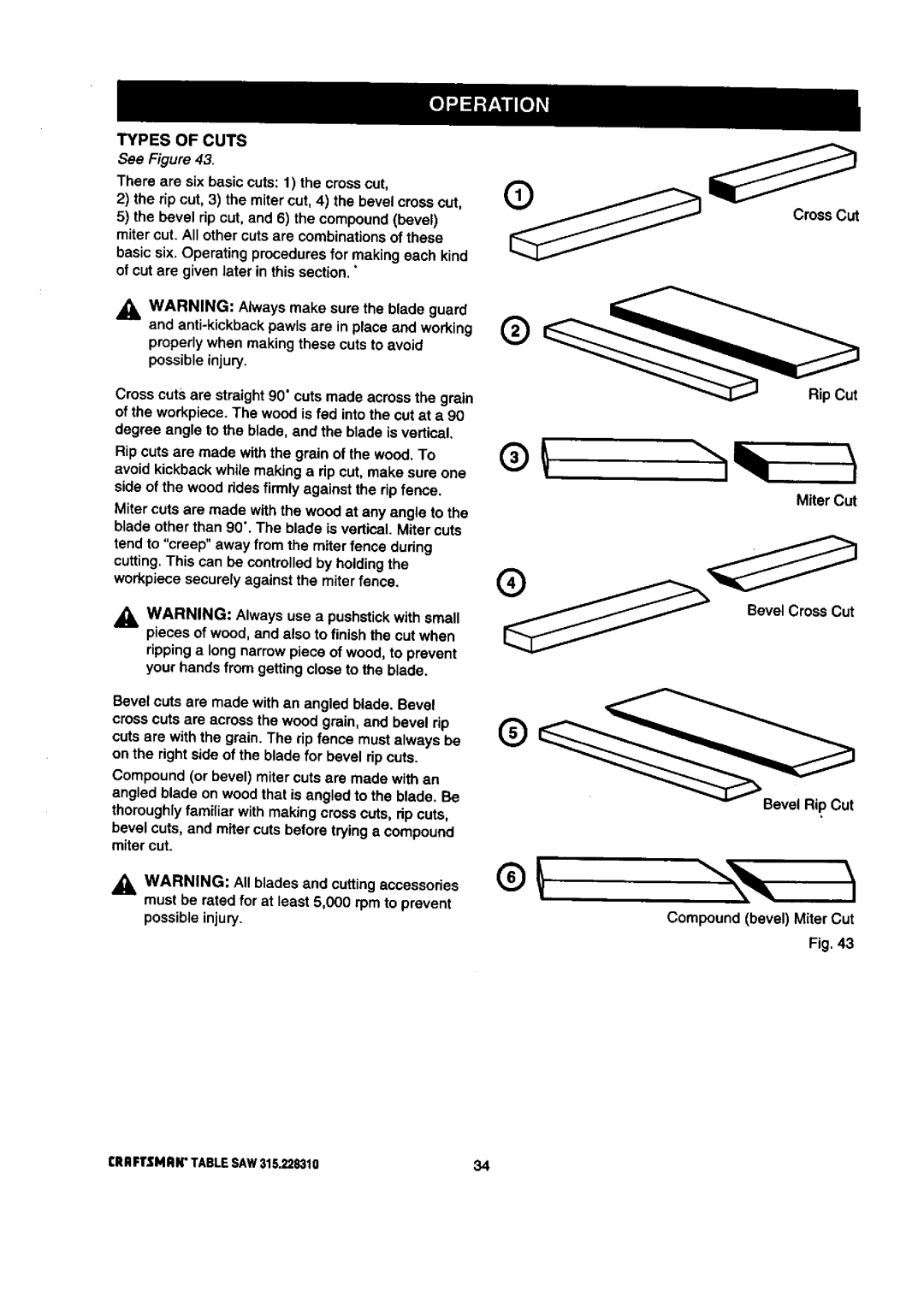
TYPES OF CUTS
See Figure 43.
There are six basic cuts: t ) the cross cut,
2)the rip cut, 3) the miter cut, 4) the bevel cross cut,
5)the bevel rip cut, and 6) the compound (bevel) miter cut. All other cuts are combinations of these
basic six. Operating proceduresfor making each kind of cut are given later in this sect'lon."
_. WARNING: Always make sure the blade guard and
properly when making these cuts to avoid possible injury.
Cross cuts are straight 90" cuts made across the grain of the workpiece. The wood is fed into the cut at a 90 degree angle to the blade, and the blade is vertical,
Rip cuts are made with the grain of the wood. To avoid kickback while making a rip cut, make sure one side of the wood rides firmly against the rip fence.
Miter cuts are made with the wood at any angle to the blade other than 90". The blade is vertical. Miter cuts
tend to "creep" away from the miter fence during cutting.This can be controlledby holdingthe workpiece securely against the miter fence.
_, WARNING: Always use a pushstickwith small pieces of wood, and also to finish the cut when
rippinga long narrow piece of wood, to prevent your hands from getting close to the blade.
Bevel cuts are made with an angled blade. Bevel cross cuts are across the wood grain, and bevel rip cuts are with the grain. The rip fence must always be on the right side of the blade for bevel rip cuts.
Compound (or bevel) miter cuts are made with an angled blade on wood that is angled to the blade. Be thoroughlyfamiliar with making cross cuts, dp cuts, bevel cuts, and miter cuts before tryinga compound miter cut.
_, WARNING: All blades and cutting accessodes must be rated for at least 5,000 rpm to prevent
possible injury.
®
o
Cross Cut
Miter Cut
Bevel Cross Cut
Bevel Rip Cut
Compound (bevel) Miter Cut
Fig. 43
tRRFTSNRN" TABLESAW315.228310 | 34 |
